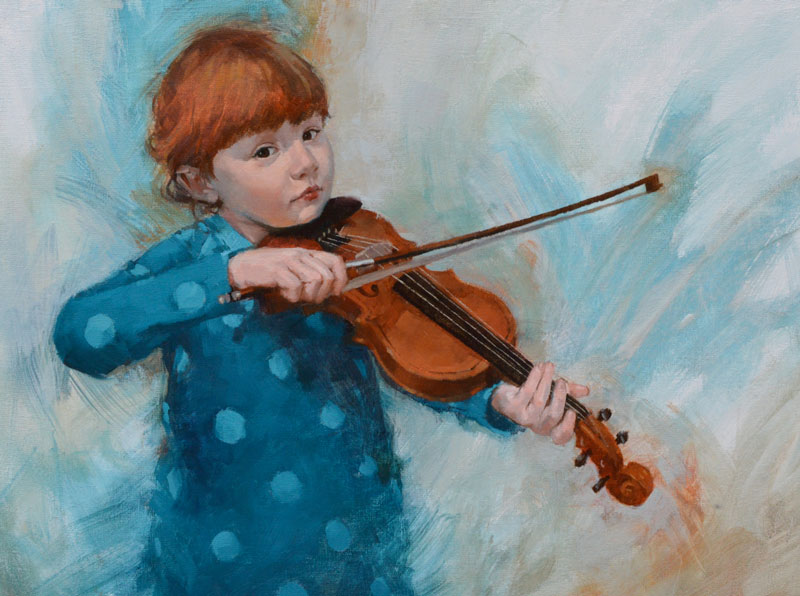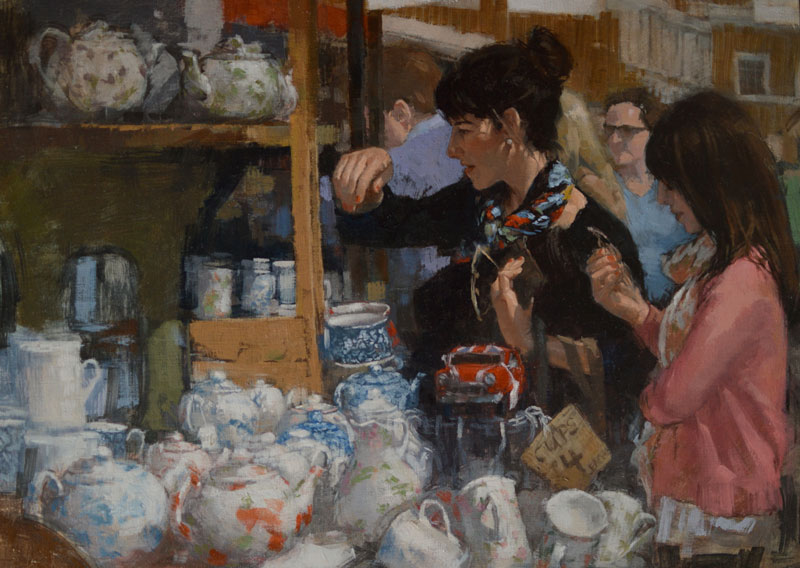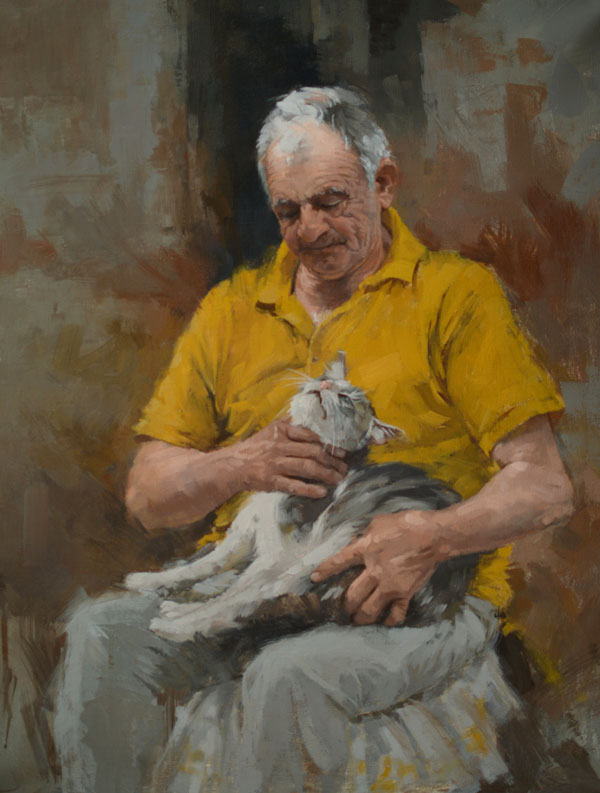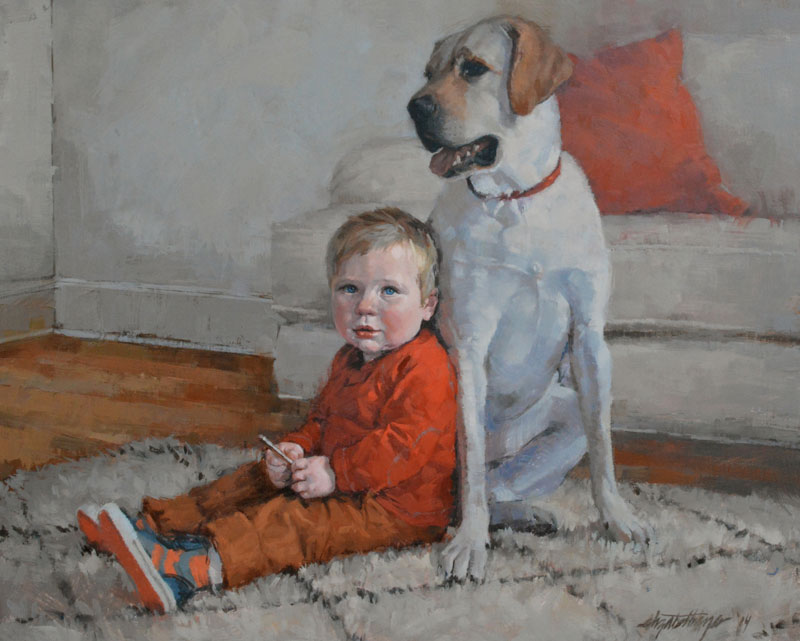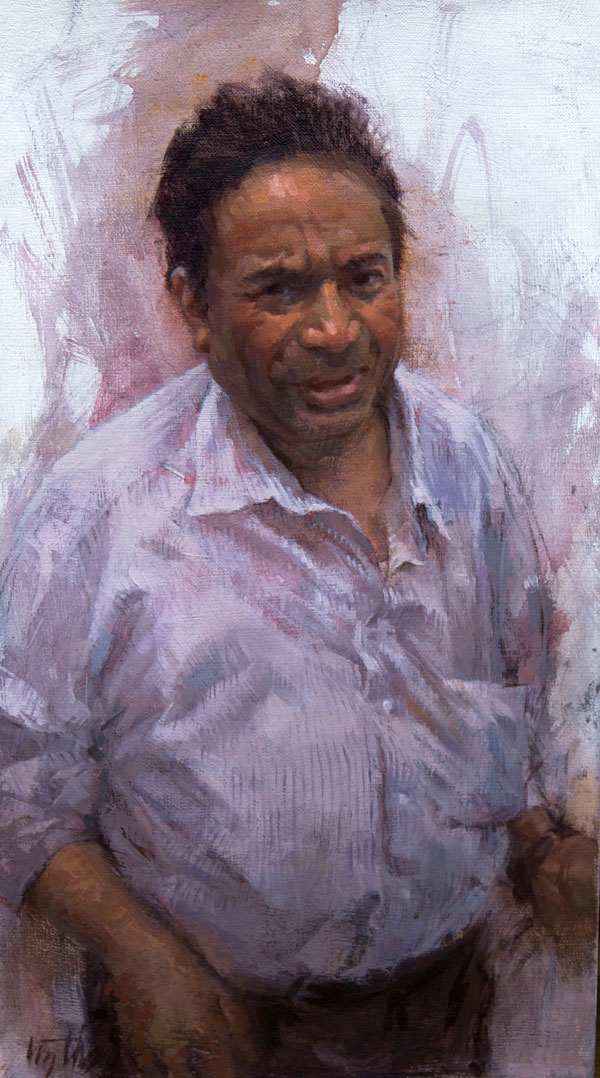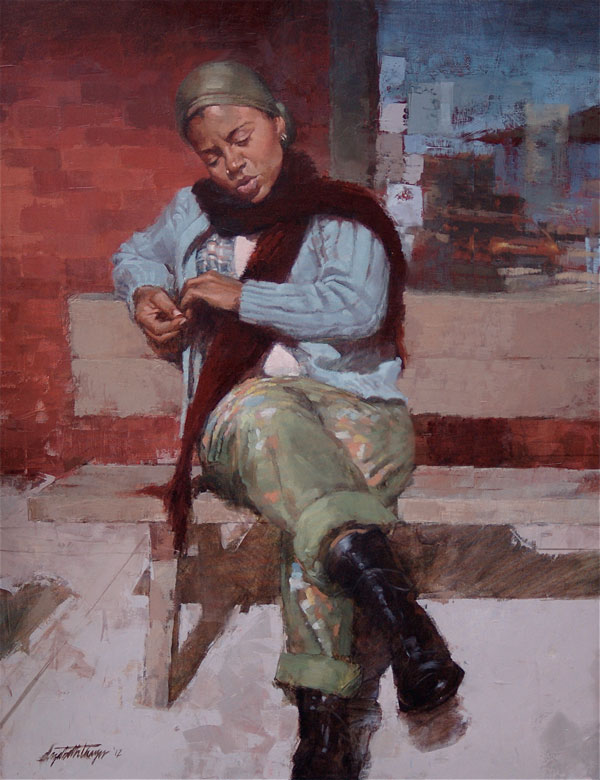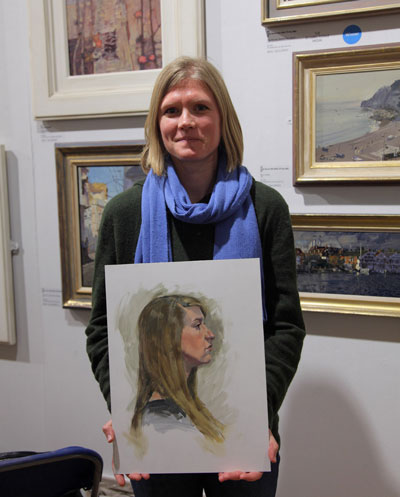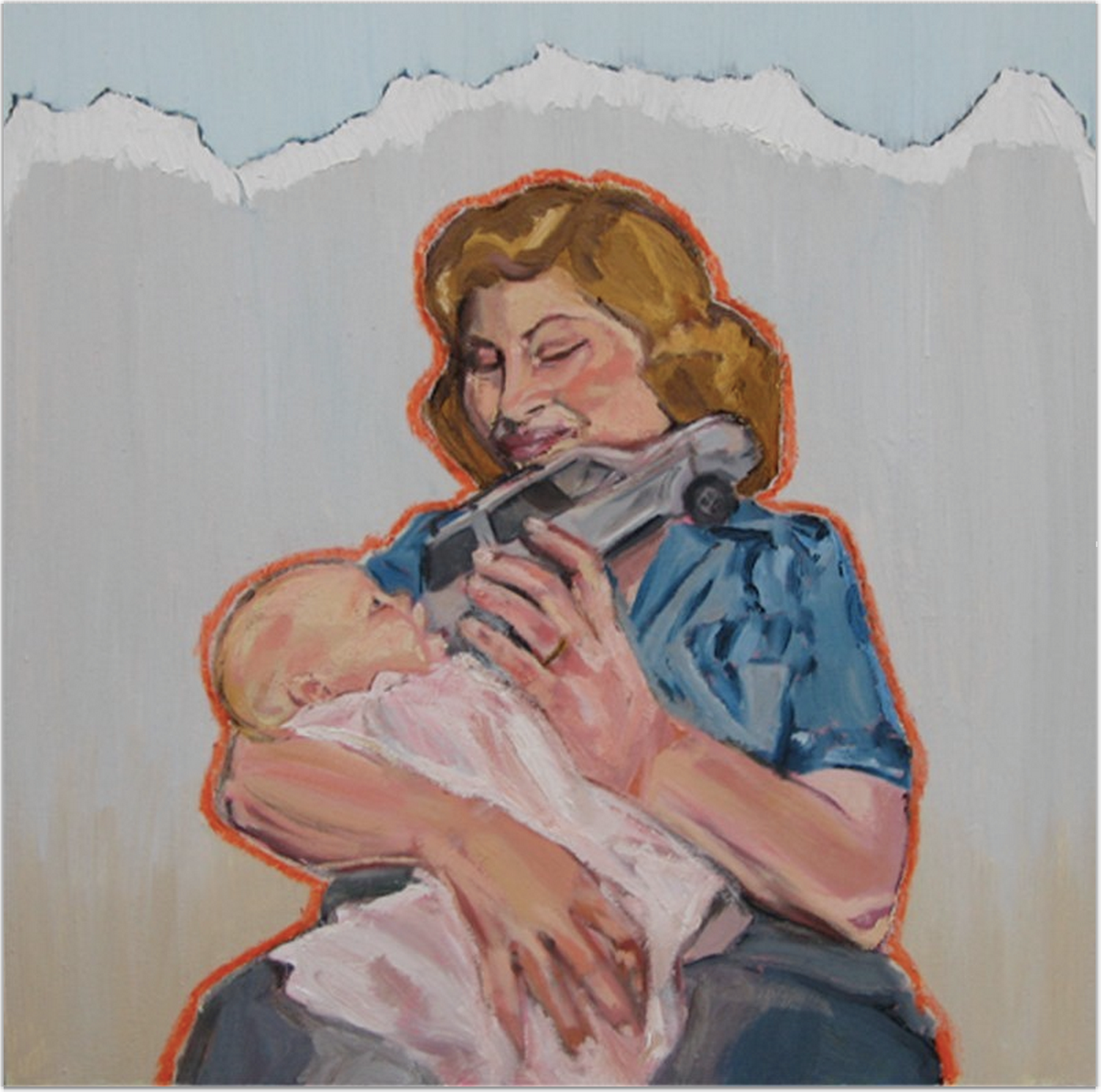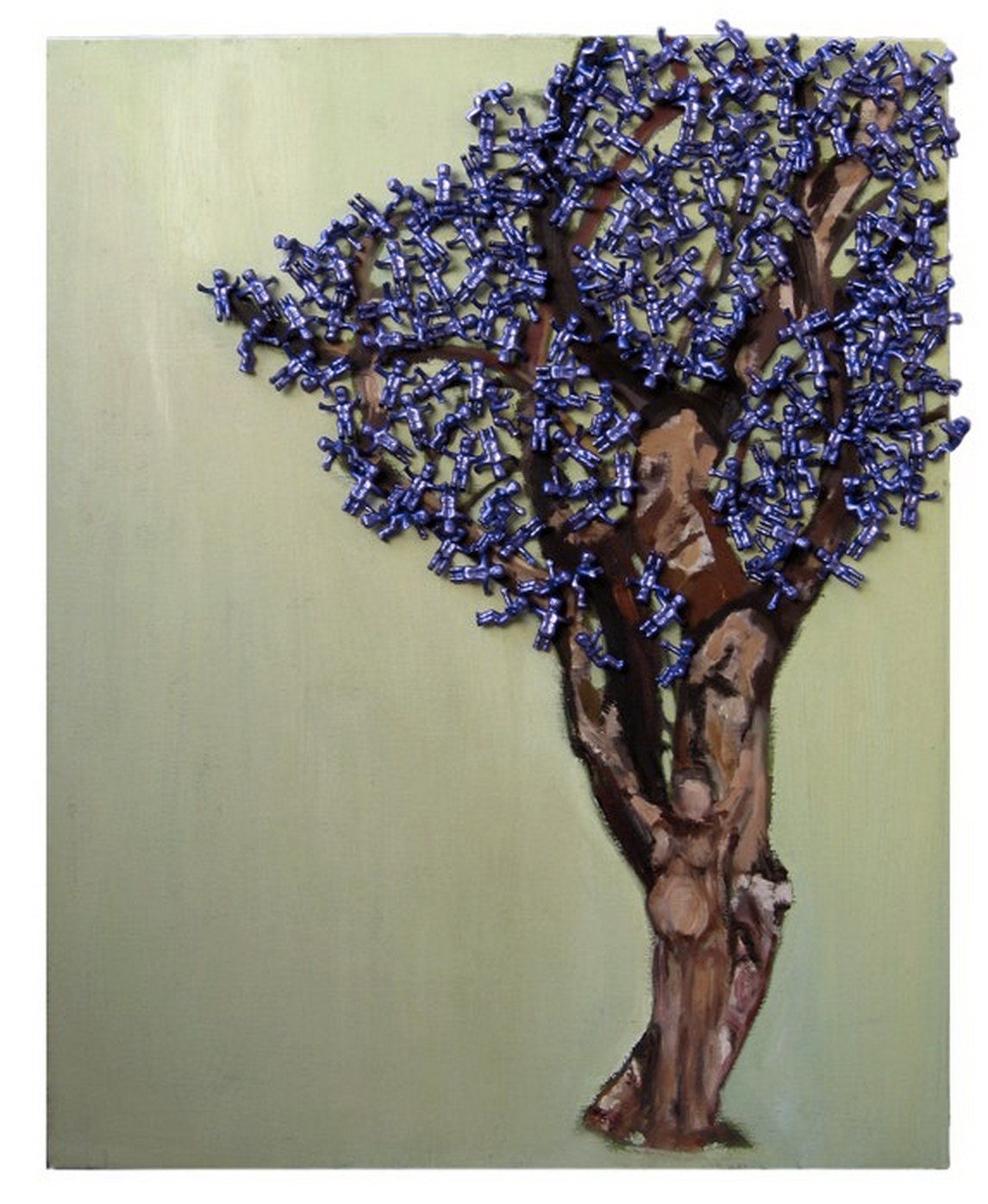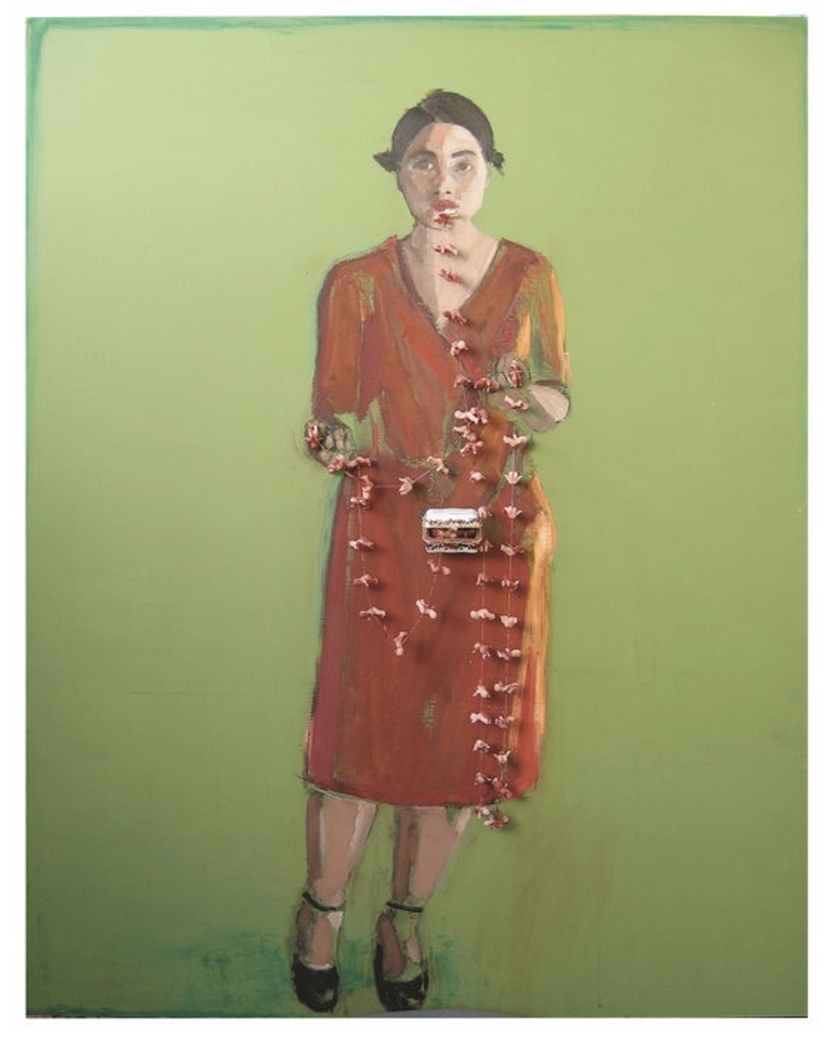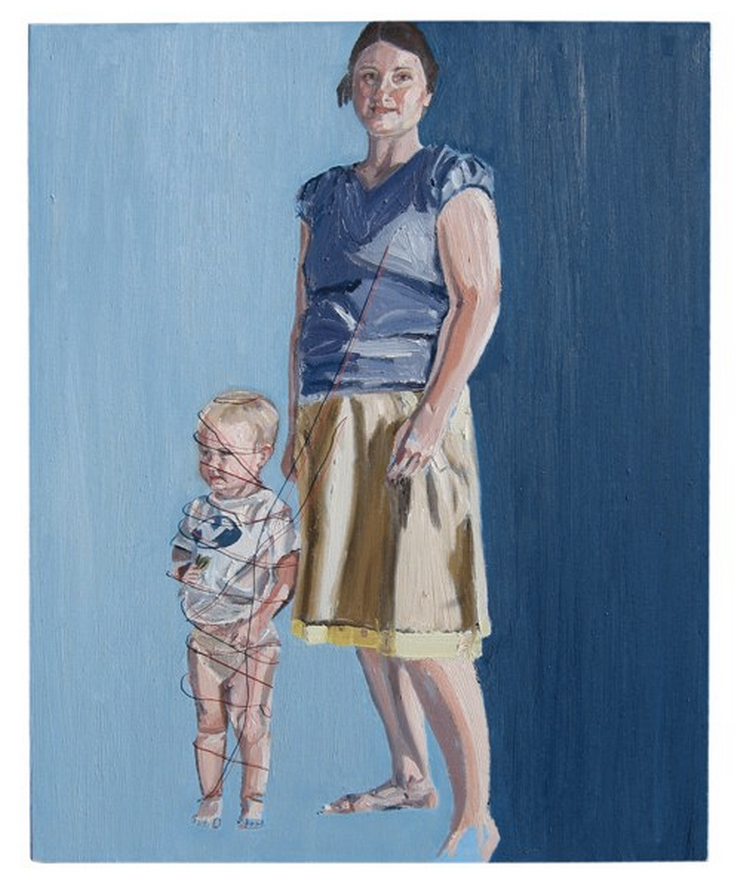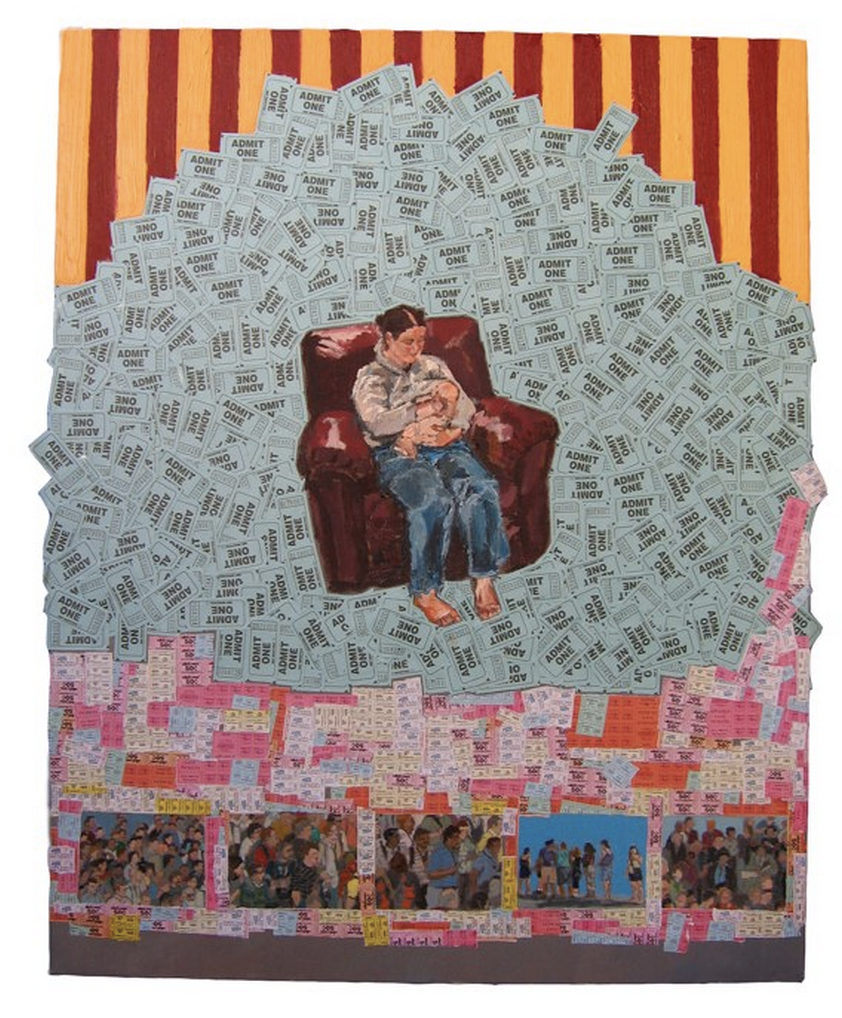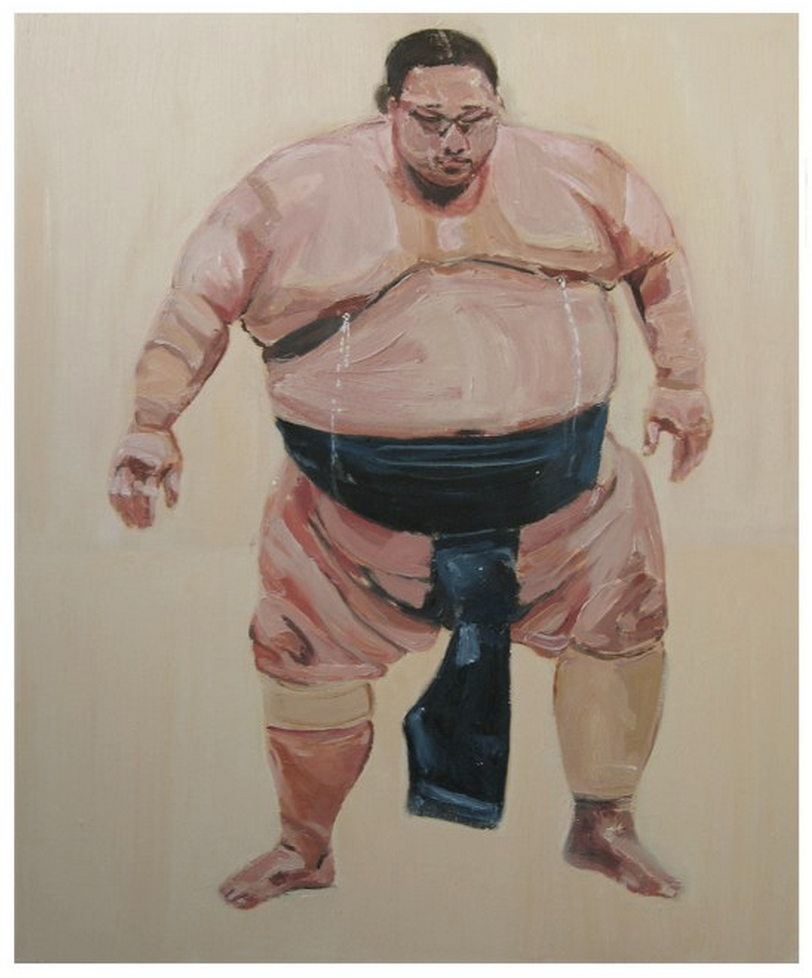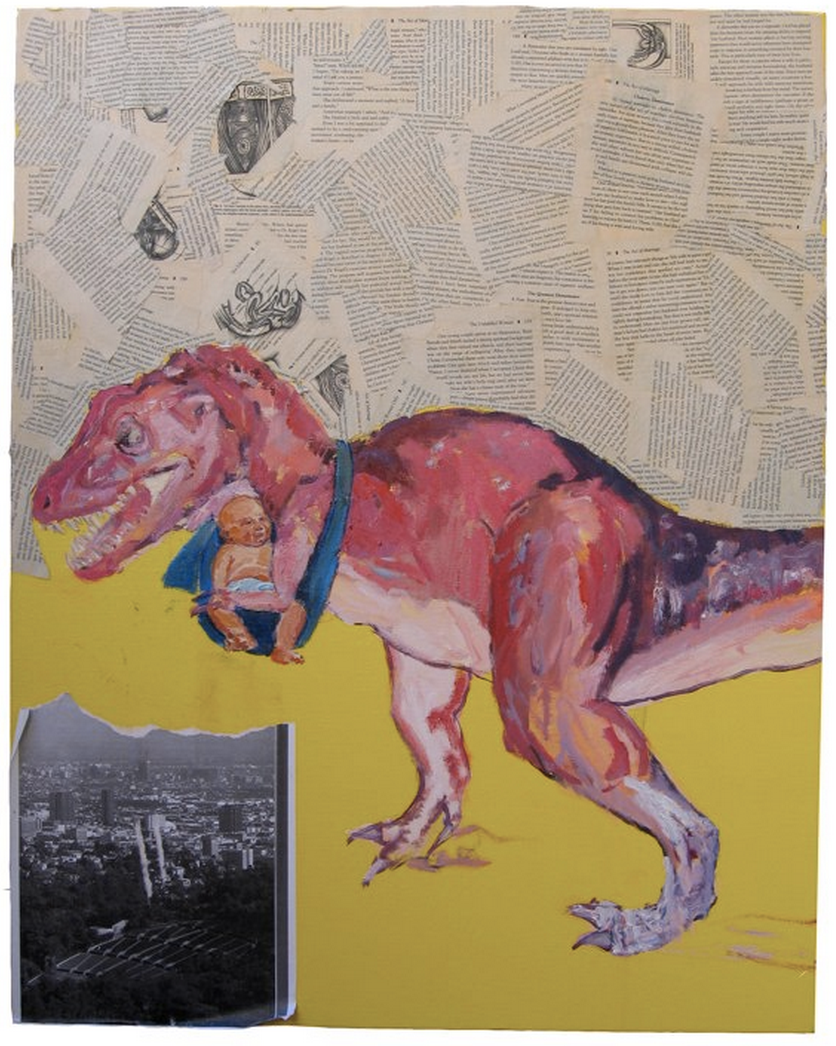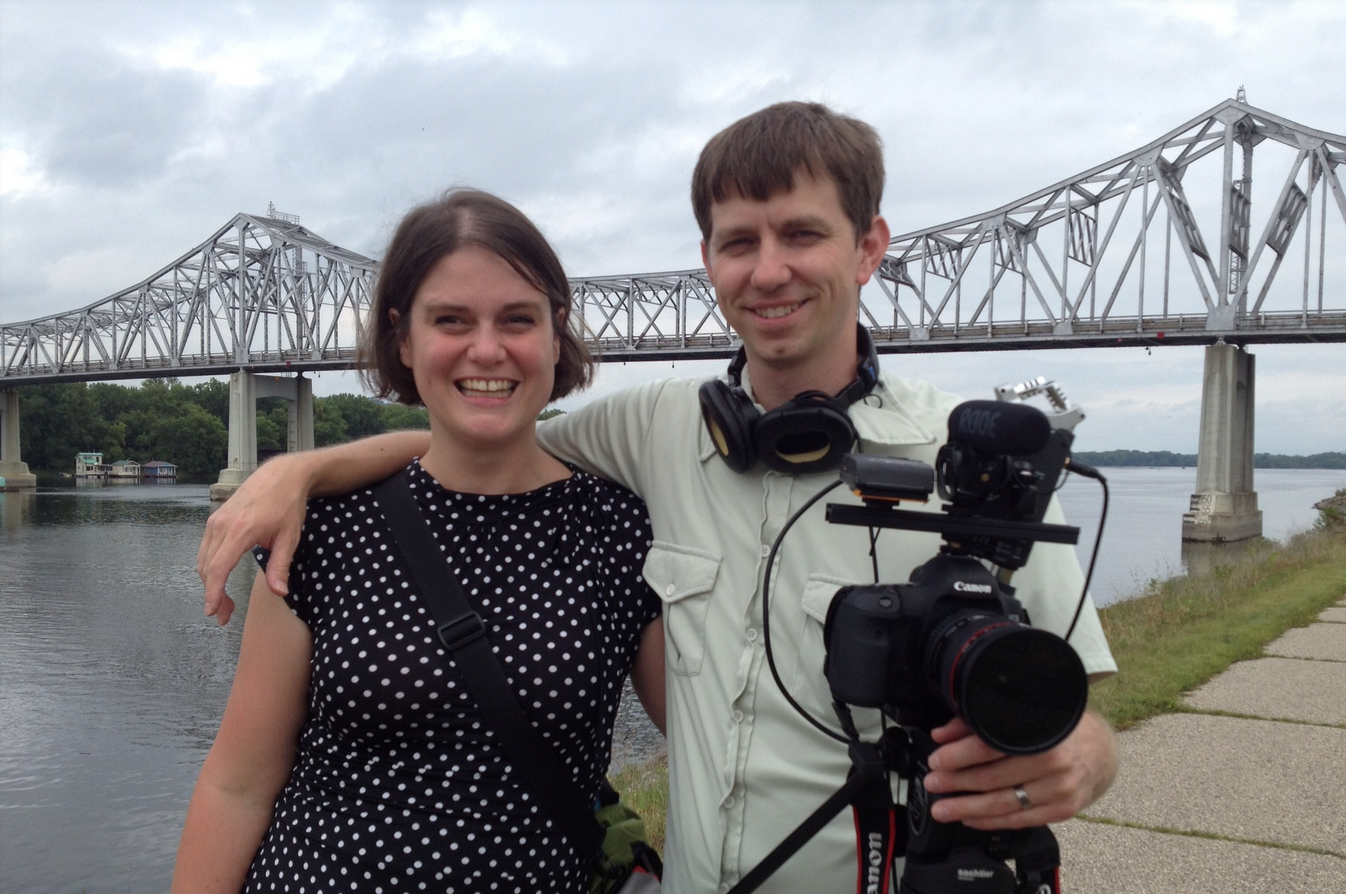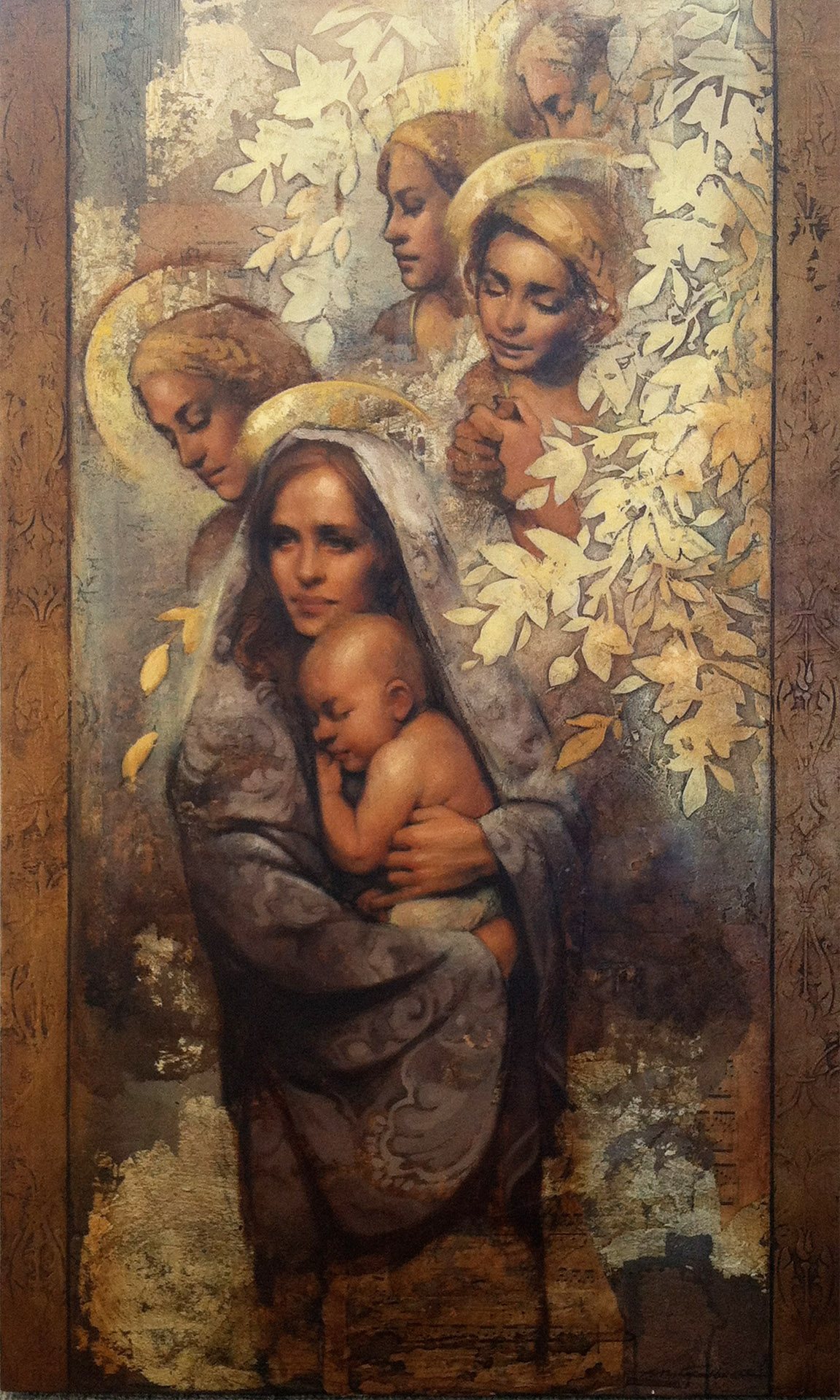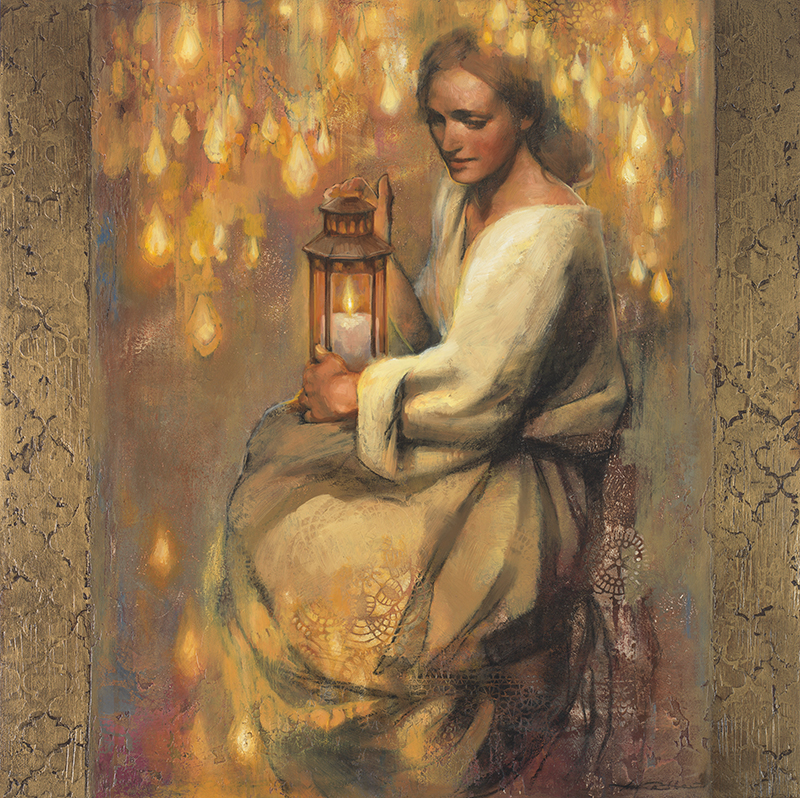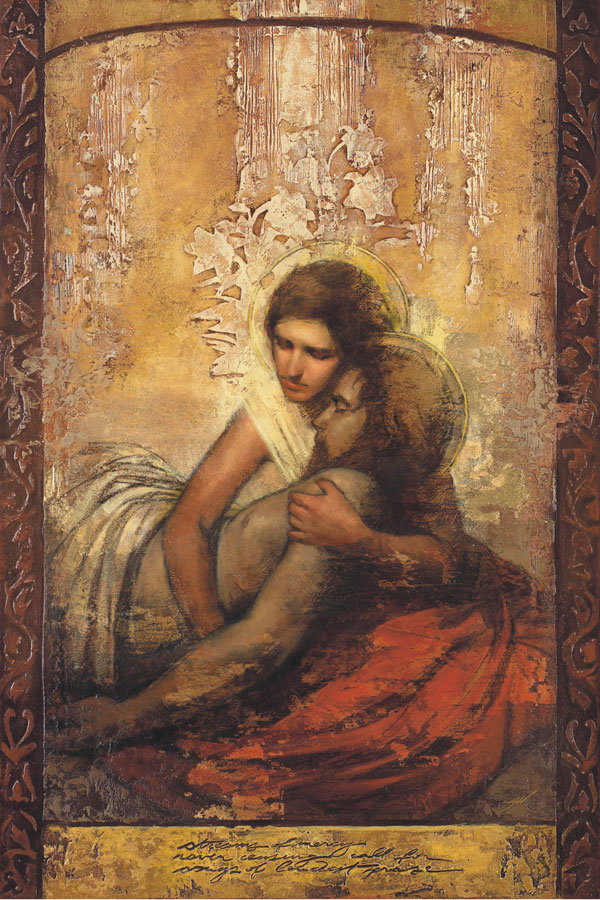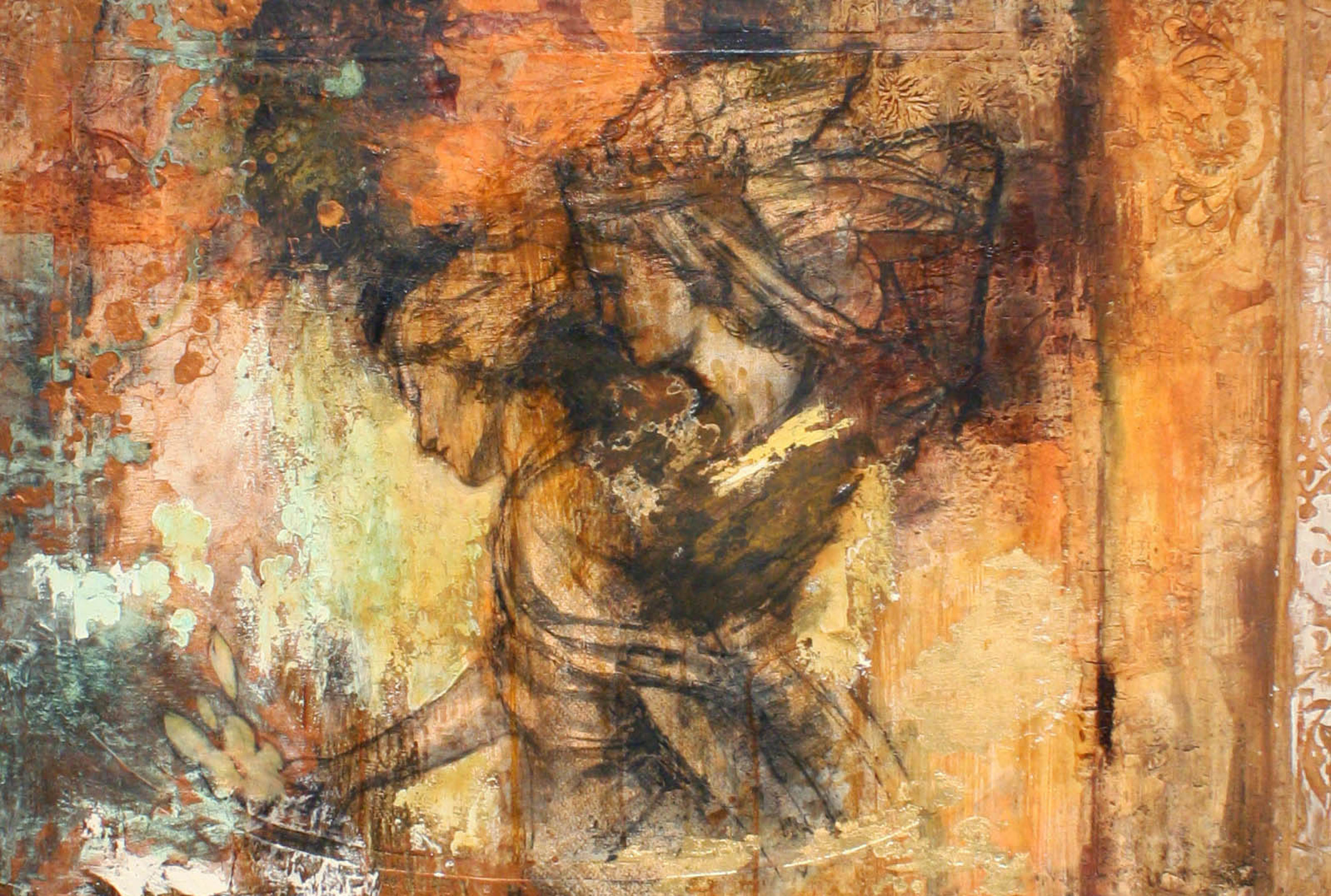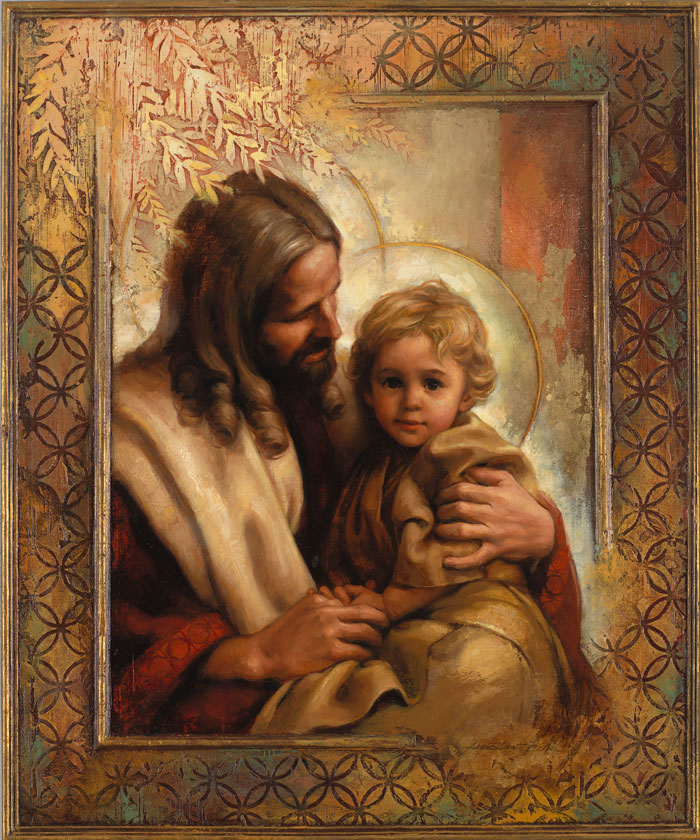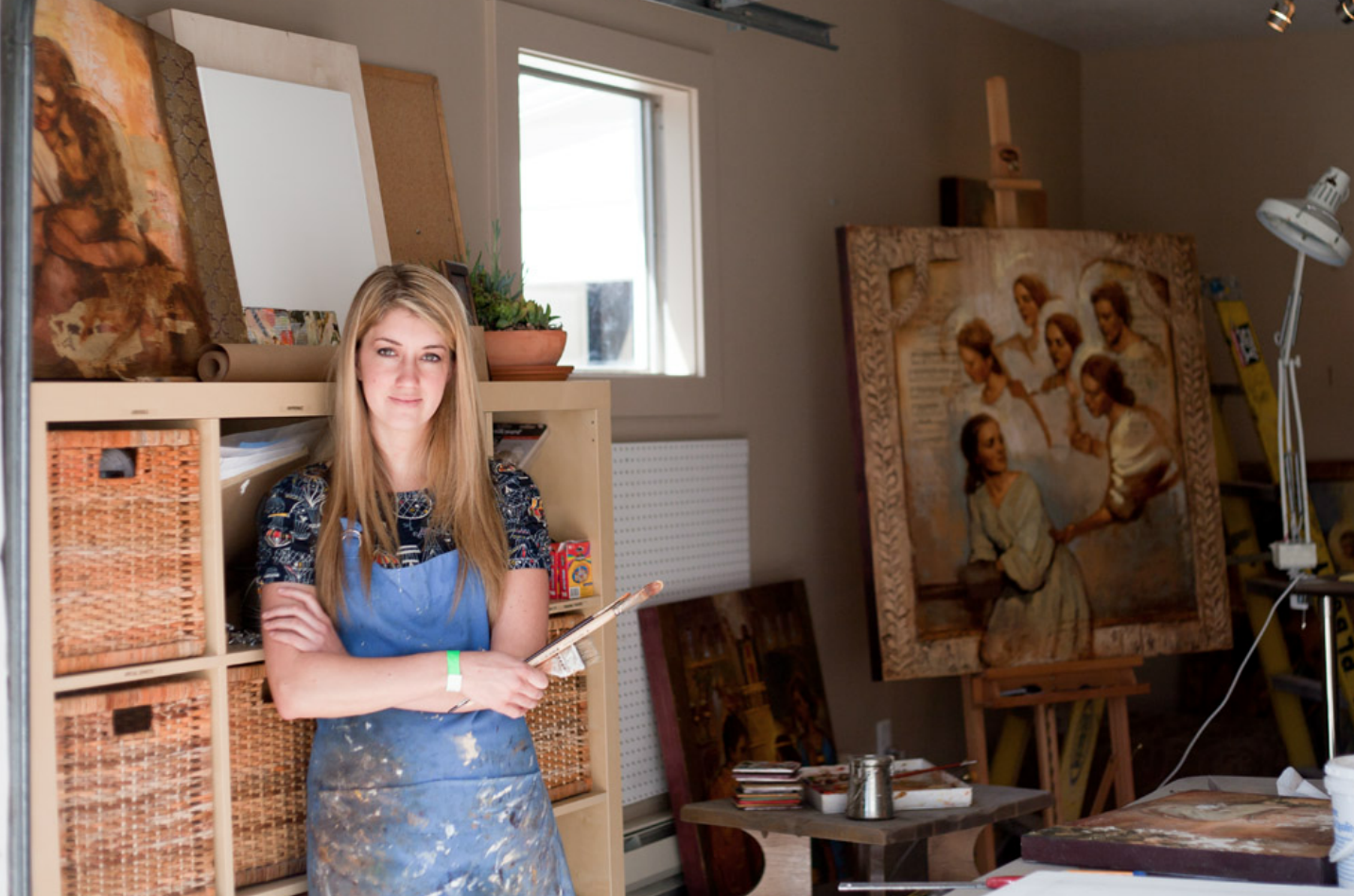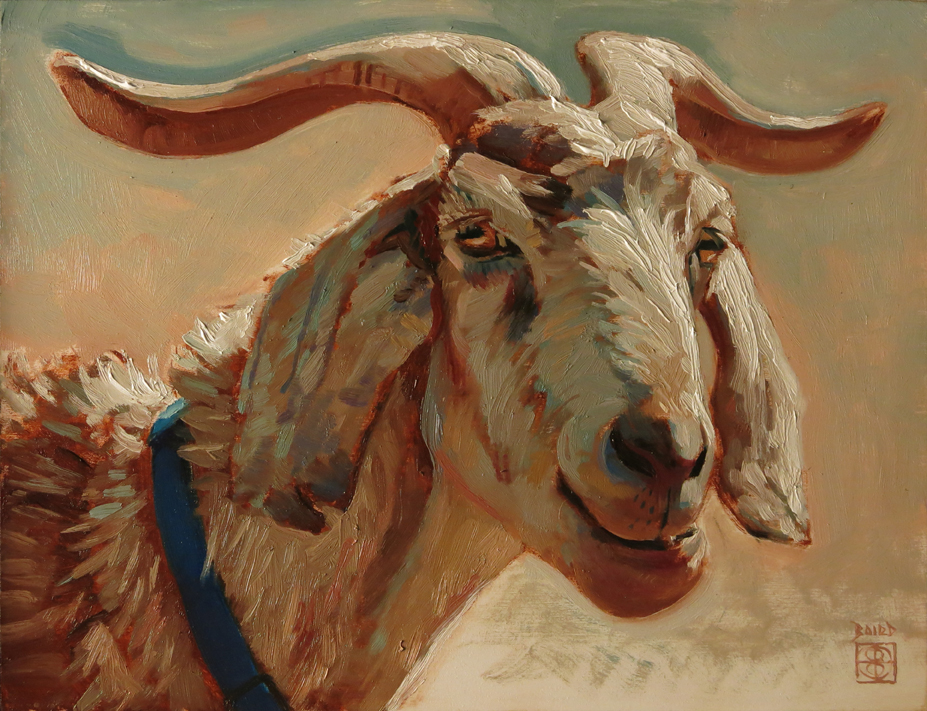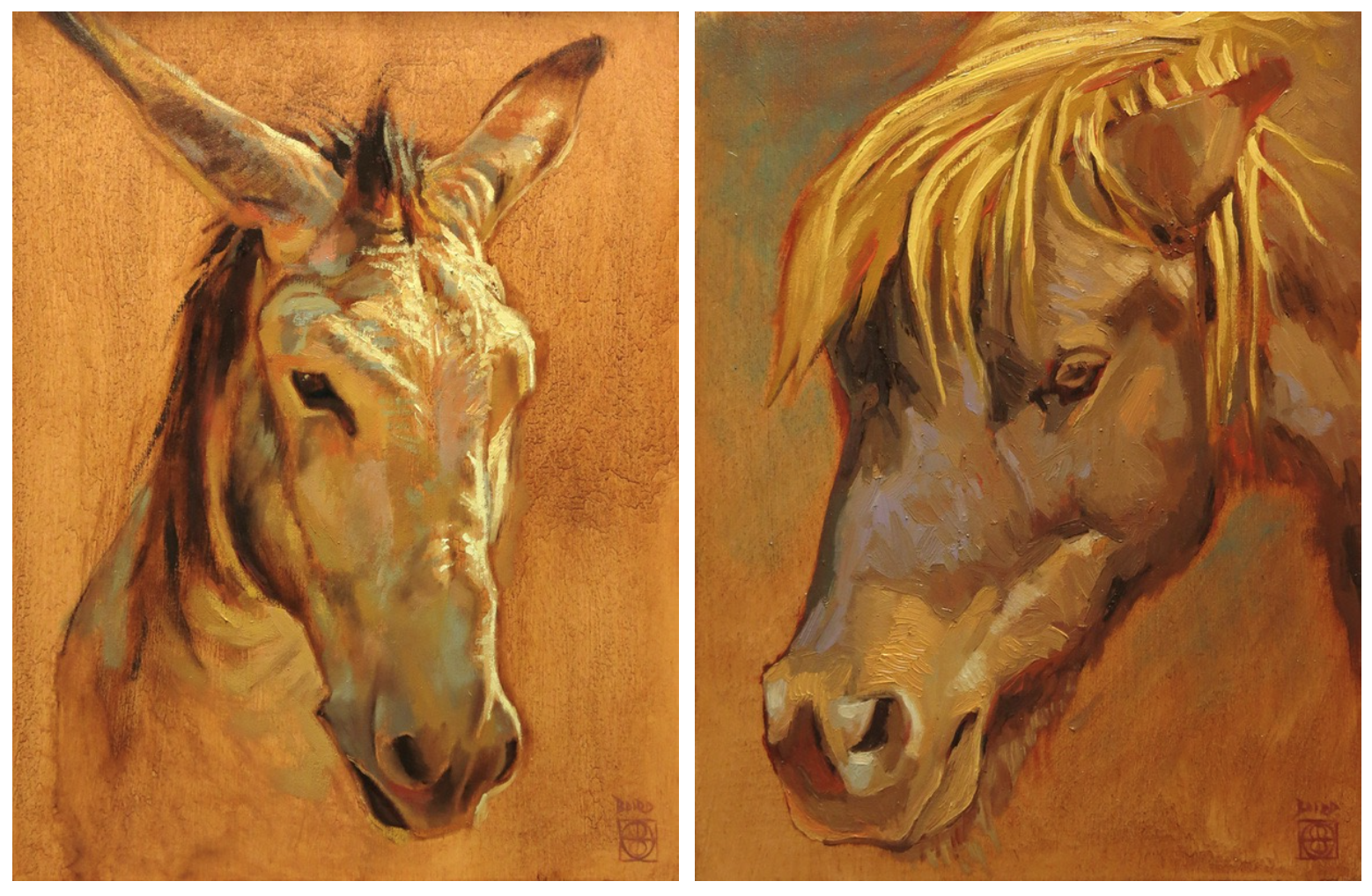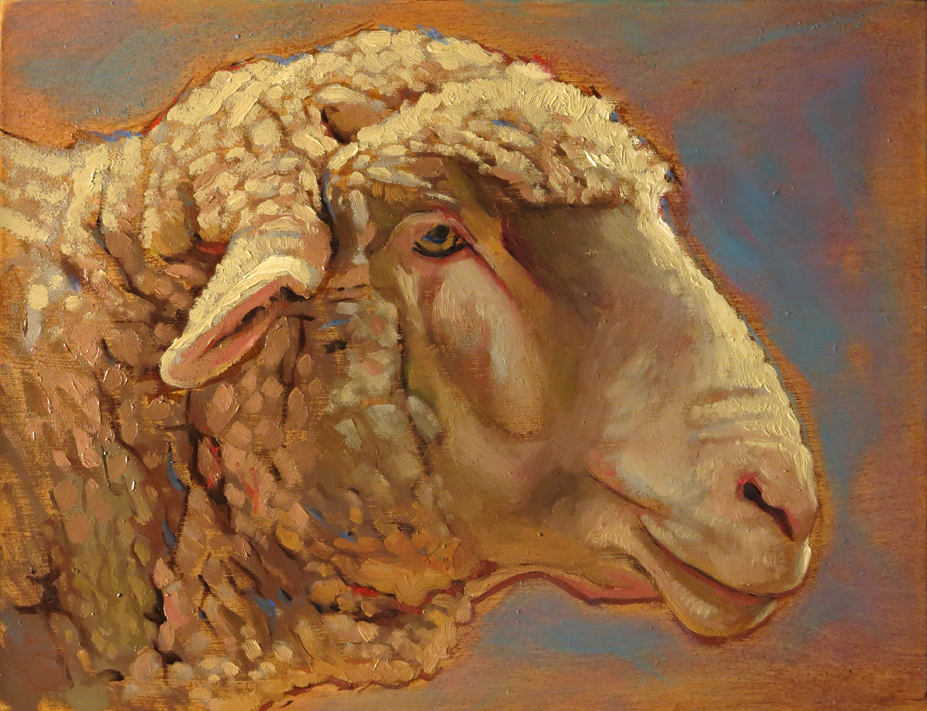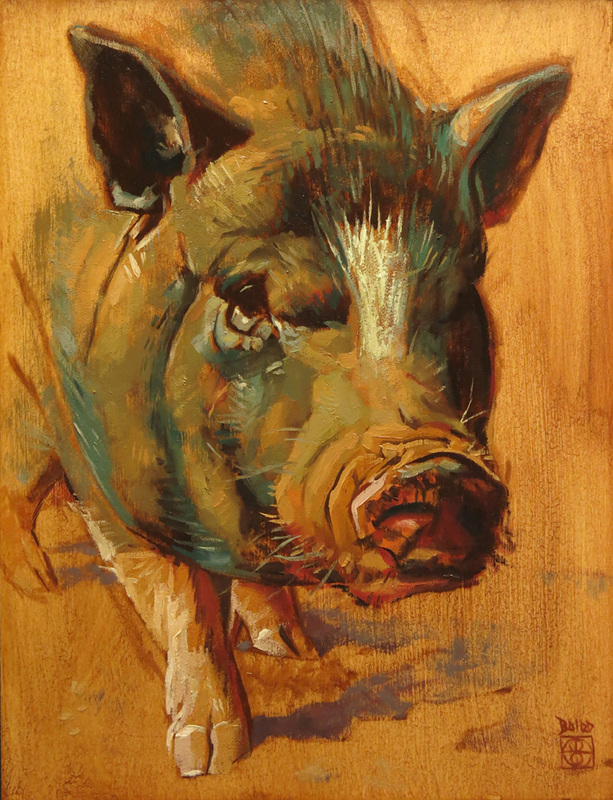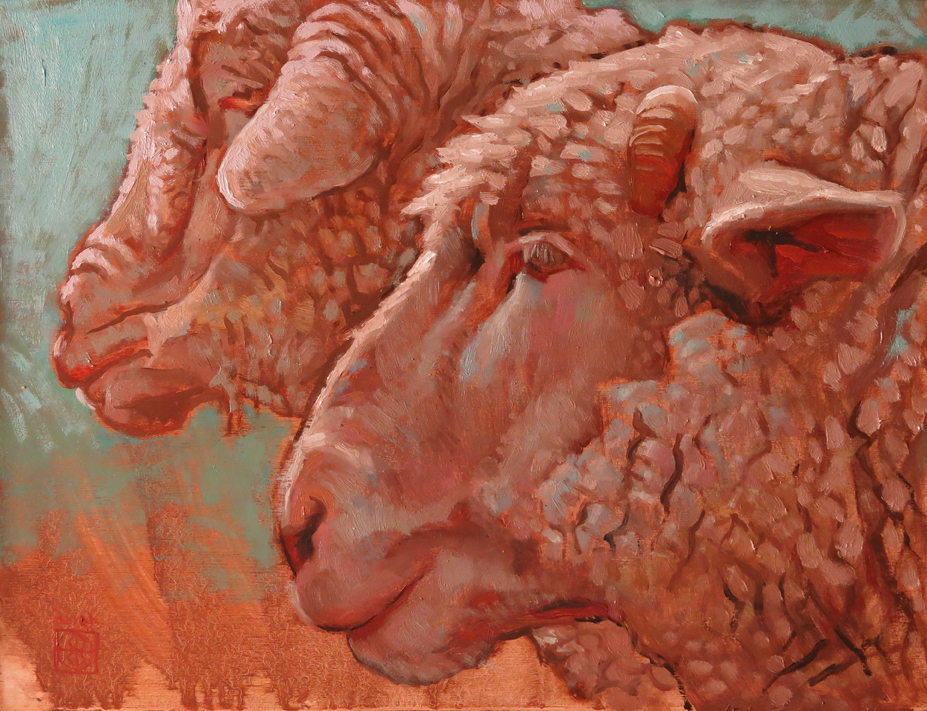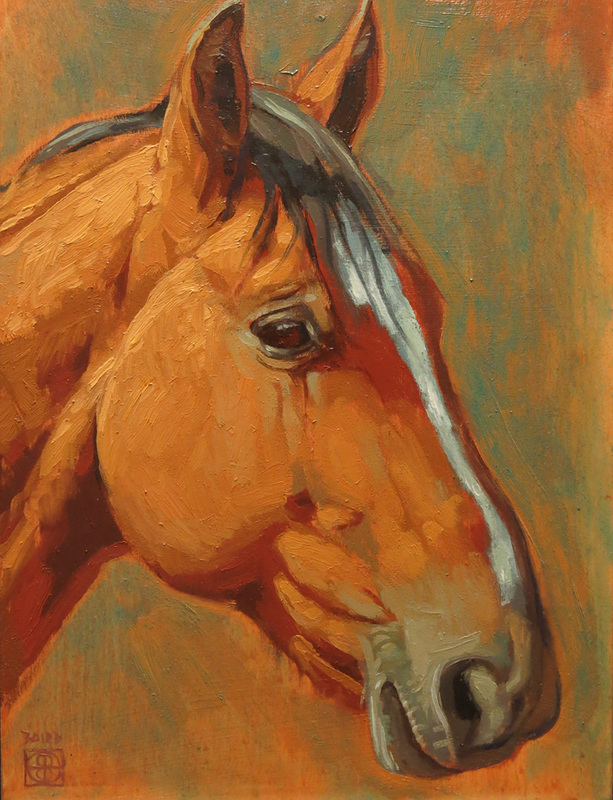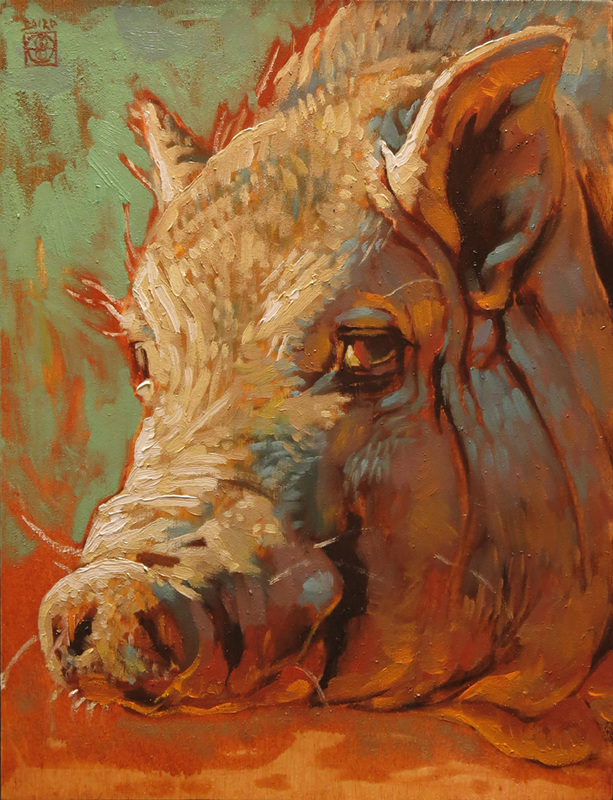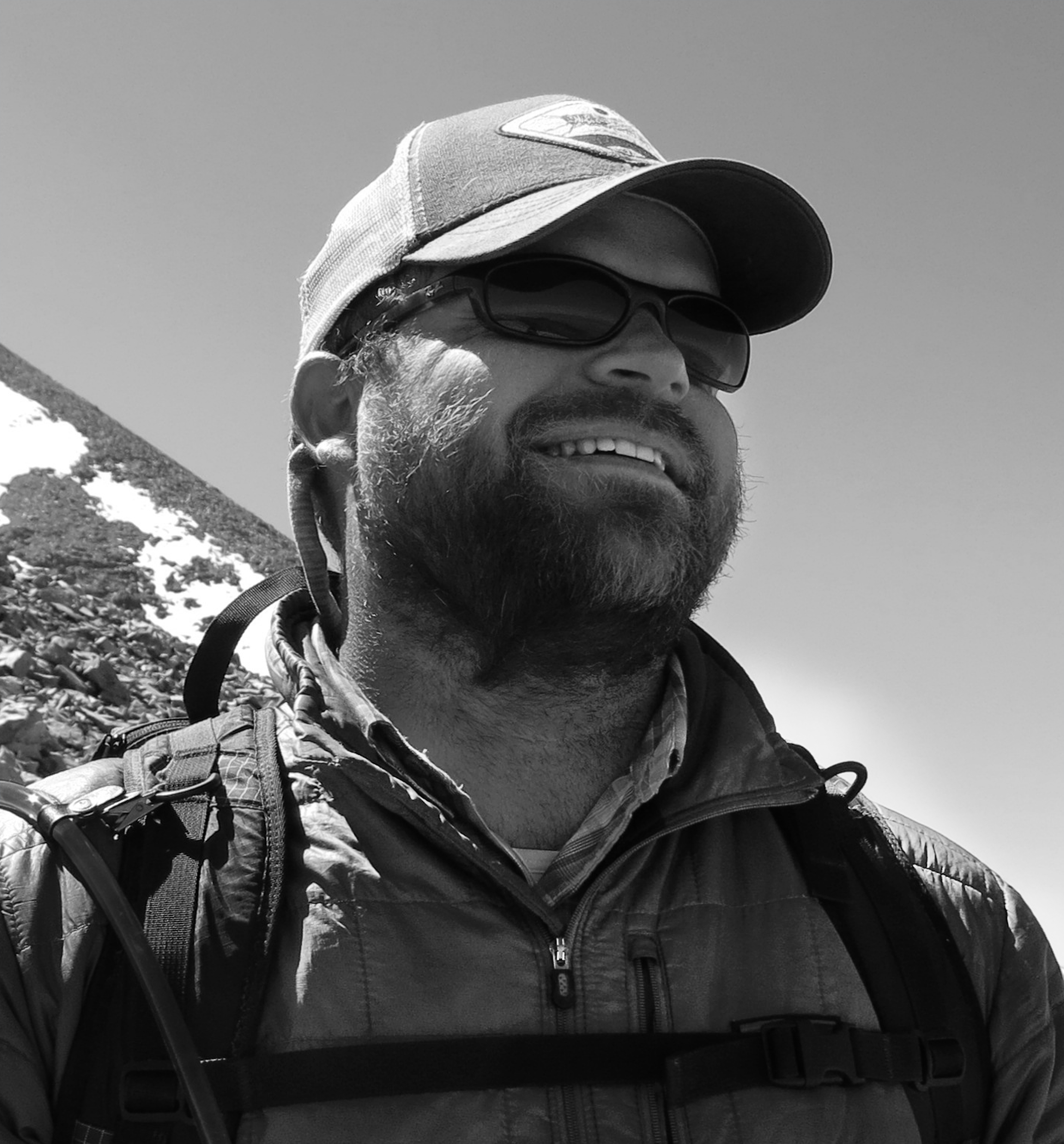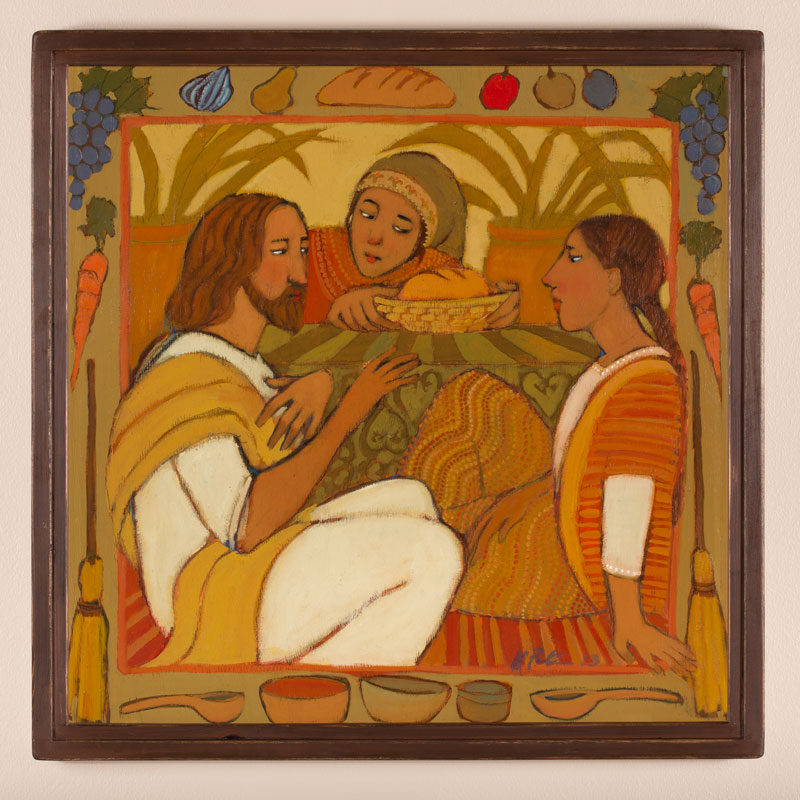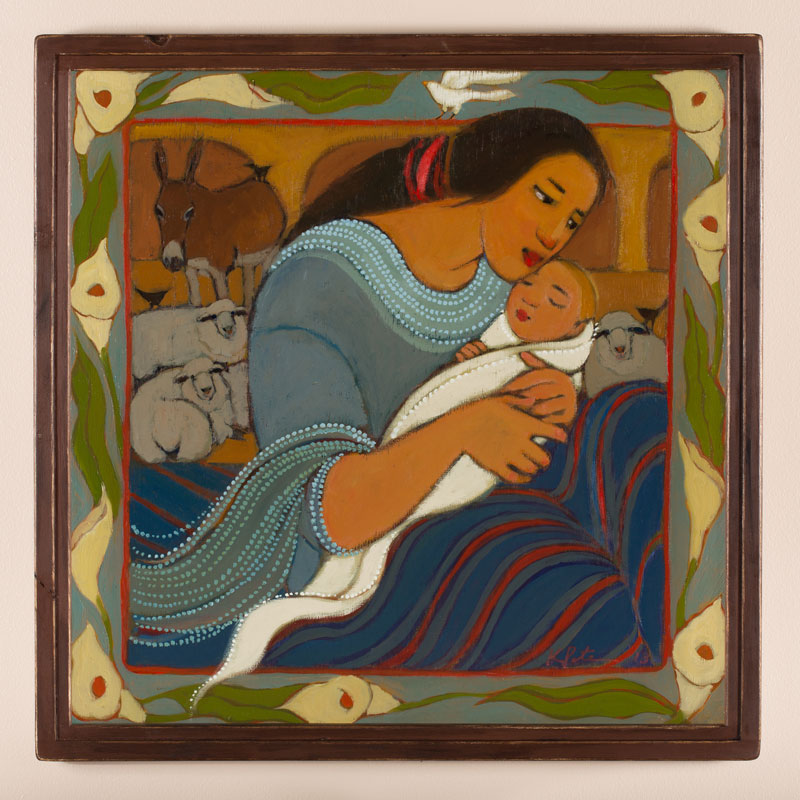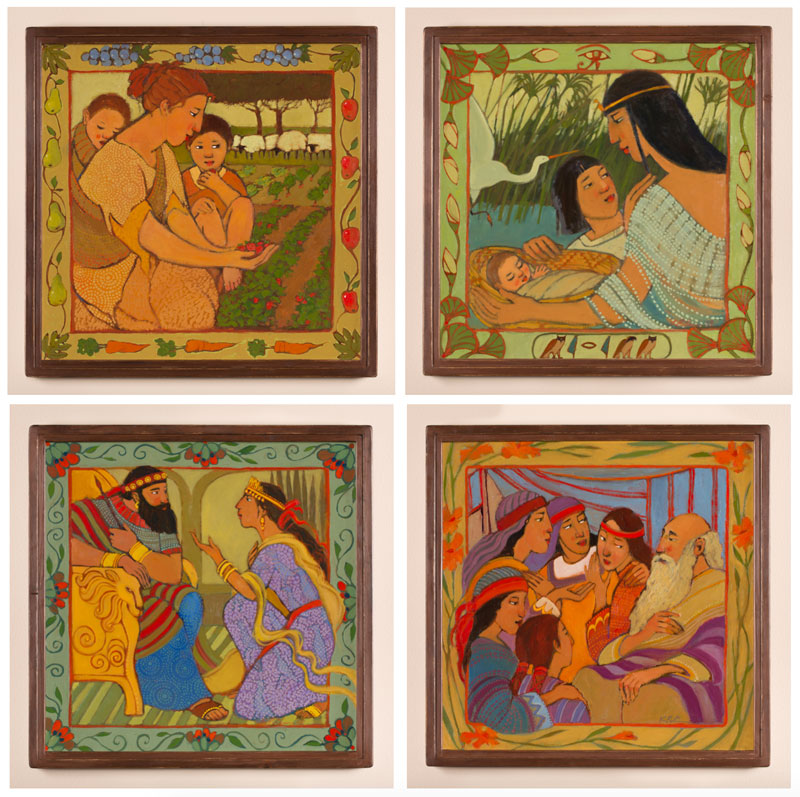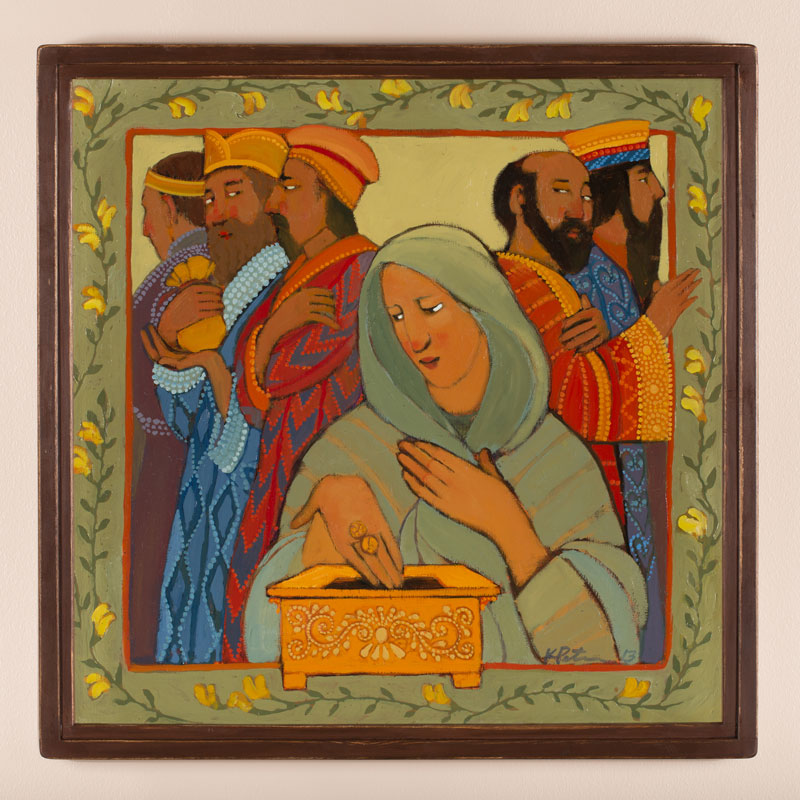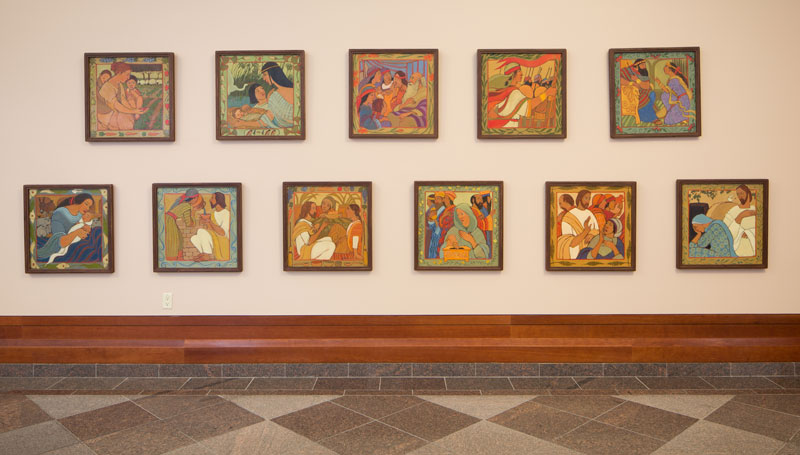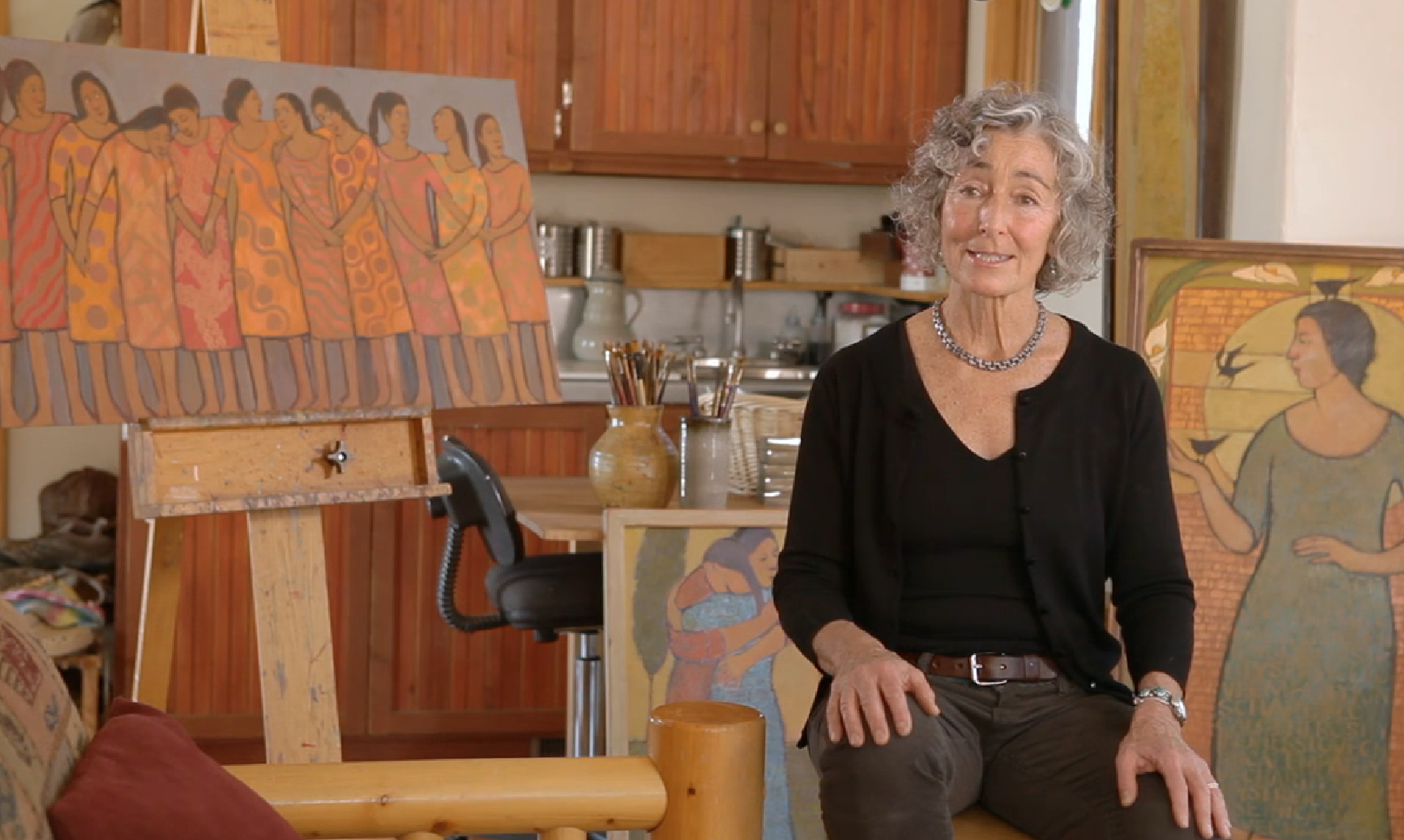Elizabeth Thayer is a portrait painter and illustrator who recently returned to the United States after an extended time in England and Germany. I knew Liz as a classmate of my wife when they were in the BYU Illustration program under Bethanne Andersen and Robert Barrett. Thayer, her husband, and her six children live in Utah.
Tell us about where you are living and what you’ve been doing with your career. I have just moved back to Utah after nine years in Europe – five in England and four in Germany. Living abroad has been a great opportunity to get to know different cultures, do some traveling, learn another language, and see some great art. Most of my time since we left school has been devoted to making and raising six little people. I have managed to squeeze some drawing and painting into kitchen corners, extra bedrooms, and late night hours. Hopefully all that will add maturity and depth to my artwork. That’s the plan anyway. Since graduating from BYU, I have done some book and magazine illustration as well as portrait work. Since having children and moving abroad, I have focused more on portrait commissions and studio painting. I have also been able to participate in some exhibitions in London, including the BP Portrait Award at the National Portrait Gallery, and annual exhibitions of the Royal Society of Portrait Painters and The Royal Institute of Oil Painters. (The fun thing about being in London is that Royal gets added onto a lot of things and it sounds important.)
You studied at BYU, Syracuse University, and UNC Greensboro. I studied illustration at both BYU and SU, and painting at UNCG. Both illustration programs were very good and have dedicated faculty who are dialed into the industry and committed to helping students achieve. It was a privilege to work with teachers at both schools. The main difference between my two experiences was that at Syracuse, being a graduate student, I was given more autonomy and was able to teach undergraduates (figure drawing), which I really enjoyed. And I saw a lot more orange. I also attended an MFA program in Painting at UNC Greensboro for a while. That was a completely different take on art, its purpose and meaning and I felt out of place for a while there. However, looking back I truly feel that I grew and was stretched in different ways at each school I attended. In each place I had mentors that were willing to spend time and effort to help my work progress.
Walk us through your approach to a new painting. I think a lot about a painting before I start. I think about composition and color and size. I think about whether I want to capture a moment or somebody’s essence, or something else. I usually do sketches and a color study. I have been working either on home-stretched linen canvas or gessoed board. I don’t usually mind preparing my own surface because it kind of clears my mind. I have been using water-soluble oil paints (clean up is easier), and have used a number of different brushes. I prefer sable brushes. I like Royal Langnickel, and have recently been using their new range of Sabletek brushes, which I understand is a blend of natural and synthetic hairs. Winsor & Newton also makes a good brush to go along with their Artisan brushes. For drawings I use charcoal, conte or nupastel. I feel like my process is still evolving, but currently I tend to do a light drawing in pencil or charcoal and fix it before adding paint. I like to use washes of thin paint, and slowly build up opacity. I work in snippets of time. A couple of hours here and there, a glance as I walk past on my way to the laundry room, a few minutes before dinner, and maybe a half hour before bed.( A few months ago I painted for almost seven hours straight for the first time in a very long time and it was both exhausting and exhilarating.) And then sometimes I scrap all that prep and just paint to have some fun making marks on a canvas.
You have said, “the human soul is infinitely more awe-inspiring than the most famous city in the world.” What do you like about painting portraits? Every so often I try to get into painting landscapes or still lifes, because I have seen so many beautiful ones, but I always gravitate back to the figure. Creating a portrait of somebody is a challenge and I like challenge. I find people fascinating. I never get bored of them. Each one is complex and unique. They can change by the minute in expression, mood, and gesture. Their stories are all different and it is interesting to see how much is manifest or hidden in their appearance. I like to discover those stories. I find the human body beautiful in its many forms, and I find the human story (both individual and collective) compelling. I want to help tell it.
